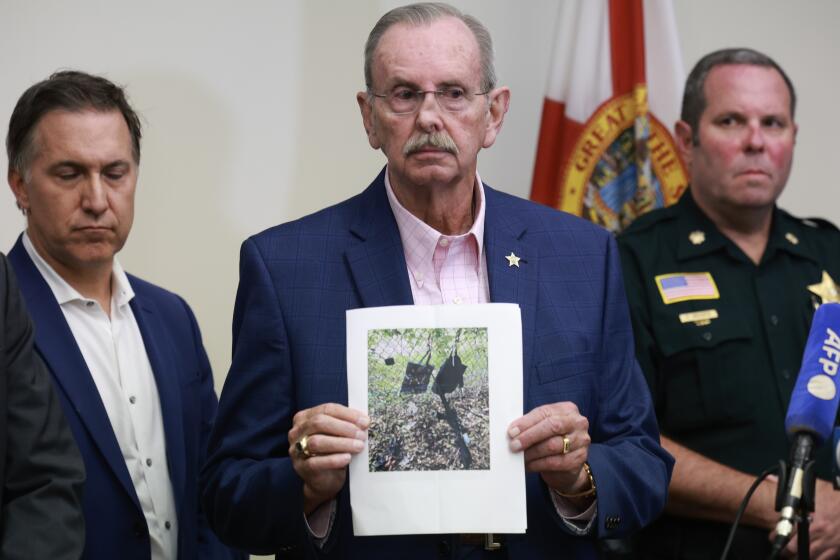That Was Then, This Is Now, Nominee Says
Distancing himself from his past conservative views on abortion and other social issues, Supreme Court nominee Samuel A. Alito Jr. told some senators Tuesday that as a judge he would not impose his personal opinions on issues that came before him.
The appeals court judge, continuing his get-acquainted visits with lawmakers, sought to minimize the significance of a memo he wrote in 1985 in which he opposed racial and ethnic quotas and said he did not believe the Constitution afforded women the right to abortion.
The memo was part of a job application for a political position in the Reagan administration, and its release Monday drew concern among liberal senators and advocacy groups that Alito would attempt to legislate his conservative views from the bench.
But after he met with Sen. Dianne Feinstein, the only woman on the Senate Judiciary Committee and a supporter of abortion rights, the California Democrat said she felt reassured that Alito would strictly interpret the law as he said he had done as a judge on the U.S. 3rd Circuit Court of Appeals since 1990.
Feinstein said Alito told her: “First of all, it was different then. I was an advocate seeking a job. It was a political job. And that was 1985.
“I’m now a judge, you know. I’ve been on the circuit court for 15 years. And it’s very different. I’m not an advocate. I don’t give heed to my personal views. What I do is interpret the law.”
Feinstein said she was persuaded: “I believe he was very sincere in what he said.”
Referring to the Roe vs. Wade decision that legalized abortion in all U.S. states, she added: “He talked about Roe in particular, about [its] having had many reviews” by the Supreme Court.
Feinstein said that although Alito did not say the landmark decision was “well-settled,” he did use the words stare decisis, a Latin phrase that essentially means to stay with precedent.
Feinstein later said that if, after Alito’s confirmation hearings, she thought that he would seek to overturn Roe, she would vote against him, as she did this year with Chief Justice John G. Roberts Jr.
Alito confronts the same problem faced by other Republican nominees to the Supreme Court after President Reagan’s election. Since 1980, the GOP platform has pledged that the president would appoint judges who will defend the “sanctity of life” and overturn the Roe decision.
To secure a high court nomination, judges nominated by Republicans must give the White House at least a strong hint that they personally oppose abortion and disagree with Roe. However, to win confirmation from Senate Democrats, they also must suggest they have no plan to overturn Roe.
In 1987, Court of Appeals Judge Robert H. Bork went down to defeat in the Senate after he forthrightly defended his previously stated view that Roe was wrong and should be overruled.
Since then, successful conservative nominees have told senators they believe the Constitution includes a “right to privacy” -- the basis for the abortion ruling -- without saying whether they believe the privacy right includes abortion. They also have emphasized their support for precedent -- again without saying whether Roe is a precedent they would support.
Roberts followed that course in September, when he won the support of all 55 Republicans in the Senate and half of the 44 Democrats.
Like Feinstein on Tuesday, Jeff Bingaman of New Mexico, another Senate Democrat, said he asked Alito about the 1985 memo. Bingaman said Alito responded by saying “it was 20 years ago.” The senator said Alito also told him that he respected the precedent set by the 1973 Roe decision.
Republican Sen. Saxby Chambliss of Georgia also met with Alito and said the nominee’s memo merely reflected his thinking at the time as a government employee. “He’s been a conservative all his life, and in 1985, when he was applying for a job, he reiterated that fact,” Chambliss said.
White House spokesman Steven Schmidt said Alito’s years as an appellate judge showed that he had a “clear pattern” of respect for judicial precedent.
More to Read
Get the L.A. Times Politics newsletter
Deeply reported insights into legislation, politics and policy from Sacramento, Washington and beyond. In your inbox three times per week.
You may occasionally receive promotional content from the Los Angeles Times.












